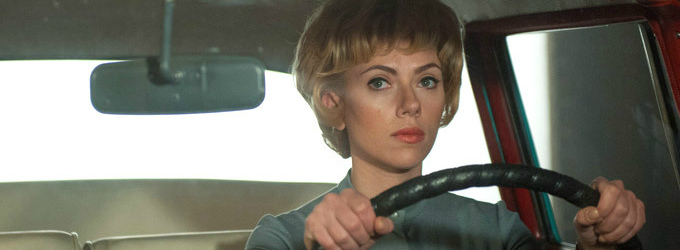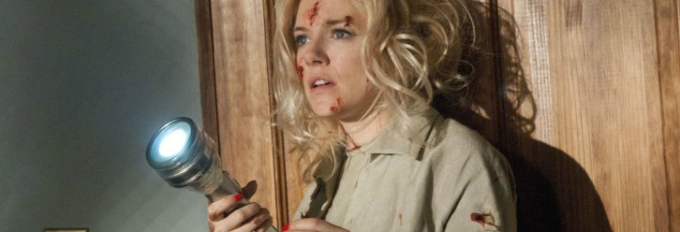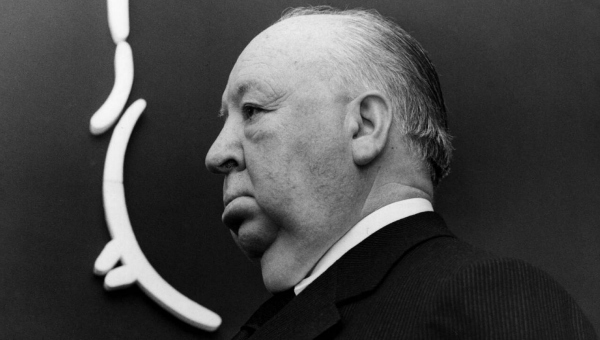 2012 saw the so-called Master of Suspense’s extensive back catalogue reprised to baying contemporary crowds in the BFI’s exhaustive ‘The Genius of Hitchcock’ season, and laid witness to something of a seismic shift in cinematic appreciation when VERTIGO replaced CITIZEN KANE as Sight & Sound magazine’s greatest film of all time – as voted for by critics and filmmakers worldwide.
2012 saw the so-called Master of Suspense’s extensive back catalogue reprised to baying contemporary crowds in the BFI’s exhaustive ‘The Genius of Hitchcock’ season, and laid witness to something of a seismic shift in cinematic appreciation when VERTIGO replaced CITIZEN KANE as Sight & Sound magazine’s greatest film of all time – as voted for by critics and filmmakers worldwide.
But in the shadow of this rejuvenated appreciation for his work lie wobbly attempts at deconstructing Hitchcock, from naysayers claiming that some of his most critically celebrated works were a product of psychotic obsession, perverse manipulation and even overt misogyny. Sacha Gervasi’s HITCHCOCK promises to reveal the untold story behind PSYCHO, “the film that shocked the world”; and Julian Jarrold’s BBC/HBO production The Girl offers a ruthless portrayal of Hitchcock’s alleged mistreatment of actress Tippi Hedren during the making of THE BIRDS and MARNIE. Whilst each film presents as a dissection of its subject’s complex psyche, they are both frustratingly opaque and deeply subjective, using cinema to simultaneously observe and attack Hitchcock whilst airing the dirty laundry of a man who can no longer answer back.
“No American movie has ever found it necessary to show a toilet, let alone to flush one!”
HITCHCOCK, the frothier of the two, is something of a visual interpretation of Stephen Rebello’s 1990 book Alfred Hitchcock and The Making Of Psycho, depicting Hitch (imitated with oafish, pouting detachment by Anthony Hopkins) deeming his own career to be in a state of stagnation and desperate to turn Robert Bloch’s striking novel into a picture. Pointedly asked by the paparazzi whether, after forty years in the industry, he should quit whilst on top, Hitch puts the wheels in motion towards what would eventually become a landmark of suspense cinema as well as a bold confrontation of stifling censorship rules (“No American movie has ever found it necessary to show a toilet, let alone to flush one!”) and a complete overhaul of attendance records, the likes of which would rarely be seen again until Spielberg’s JAWS fifteen years later.
As fascinating as this behind-the-scenes glimpse of a masterpiece is, the virtues of Rebello’s book stop here, diluted by a gauche artificiality that undercut the film’s claims for authenticity. Bookended by a gawky framing device that uses monologues in the vein of the director’s television show Alfred Hitchcock Presents, Gervasi’s film is less an historical illustration than a love story about the various wedges that formulate between Hitchcock and his long-suffering wife Alma Reville (played here by Helen Mirren). Gervasi and screenwriter John J. McLaughlin contrive for the film a love affair between Alma and Whitfield Cook (Danny Huston), a writer who worked on the scripts for several of Hitchcock’s notable works. This apocryphal aside fails to weave into the overarching non-fiction of the piece, which is already at odds with itself over what story it is trying to tell. Gervasi and McLaughlin create a duality between the troubled persona of Hitchcock and that of Ed Gein, the murderer who inspired Bloch’s novel. Gein appears in the film in flashback, and as a ghostly figure hovering at Hitchcock’s shoulder, goading him to embrace his sadistic identity and corpulent mortality.
 Yet Hitchcock’s ostensible depravity, and his relationship with the dark recesses of his own mind, are dialled down as the film journeys on, struggling to examine Hitchcock”s psychological complexity. The questions over his deep fascination with the source text is immediately dropped in favour of the principal romantic conflict, building to a sympathetic ending where conflicts are resolved and genre conventions restored, as is the filmmaker’s recognition of his love and respect for his stalwart Alma and for women in general.
Yet Hitchcock’s ostensible depravity, and his relationship with the dark recesses of his own mind, are dialled down as the film journeys on, struggling to examine Hitchcock”s psychological complexity. The questions over his deep fascination with the source text is immediately dropped in favour of the principal romantic conflict, building to a sympathetic ending where conflicts are resolved and genre conventions restored, as is the filmmaker’s recognition of his love and respect for his stalwart Alma and for women in general.
This dramatically conflicts with Jarrold’s The Girl. HITCHCOCK allows the director to get away relatively unscathed by his shady obsessions, but Jarrold and screenwriter Gwyneth Hughes condemn him, levelling a series of post-mortem charges based partly on Hedren’s recent allegations (she has been cited as calling him “evil and deviant”) as well as Donald Spoto’s contemptuous book Spellbound by Beauty. The Girl appears to be the cinematic equivalent of one of Hitch’s prominent quotes: “Blondes make the best victims”, going so far as quoting this macabre line in its opening frame. Played by Toby Jones, Hitchcock is portrayed as nothing more than a gravelly voiced predator homing in on his prey. He makes constant bids for Hedren’s emotions whilst ignoring Alma, (played more fittingly by an understated Imelda Staunton) who is shown as more of a birdlike, submissive character than Mirren’s romanticised representation.
…a man at war with his alcoholism, inflated egotism, sexual impotence and a loathing of his own physical appearance…
Like the knife that plunges into the writhing body of Marion Crane, one can almost visualise the hatchet pounding into the director here: portrayed as a man at war with his alcoholism, inflated egotism, sexual impotence and a loathing of his own physical appearance. He is played by Jones as a skulking crustacean, shuffling around awkwardly, spitting out innuendo-laden and provocative remarks and making a steady stream of lecherous advances toward his leading lady. While perhaps the more effective of the two films in its analysis of the making of a classic – a sequence illustrating the lengthy shooting of the attic scene, where Hedren was showered with live birds for five days, is exact and quite arresting – its yearning to paint a biased and sensational portrait is deplorable. However much Hedren and Spoto howl to the contrary, these vindictive reassessments are being unanimously denied by previous Hitchcock sirens such as Eva Marie Saint and Kim Novak, who endorse their career benefactor, and even Janet Leigh (played by Scarlett Johansson in Hitchcock) labels him a sweetheart compared to the likes of Orson Welles.
Of course, such personal and serious accounts shouldn’t be ignored, but what should be questioned is the manner in which they are depicted and exploited. These petty excursions in rotund pastiche make little effort toward a search for truth, so absorbed are they with representing the master filmmaker (shot almost always side on, in his distinguished profile) in such shallow depths. Whether audiences choose to believe the differing opinions on show here or not, these films are valuable reminders of just how fascinating and debatable PSYCHO, THE BIRDS and even MARNIE are: three career peaks before a slow dwindling of artistic prominence.


One thought on “Which Hitch is which?”
Comments are closed.